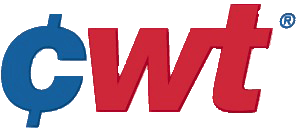 ARLINGTON, VA – Dairy producers and exporters today urged Congress to eliminate the threat of damaging new tariffs on dairy exports to Canada and Mexico by solving a trade dispute over country-of-origin meat labeling in the massive year-end spending bill currently being negotiated on Capitol Hill.
ARLINGTON, VA – Dairy producers and exporters today urged Congress to eliminate the threat of damaging new tariffs on dairy exports to Canada and Mexico by solving a trade dispute over country-of-origin meat labeling in the massive year-end spending bill currently being negotiated on Capitol Hill.
In a letter sent Thursday to House and Senate leaders, the National Milk Producers Federation and the U.S. Dairy Export Council expressed increasing alarm that new tariffs targeted at U.S. dairy exports to the two neighboring nations are potentially only weeks away.
The tariffs would be imposed under a World Trade Organization finding that parts of the U.S. country-of-origin labeling law violate international trade rules, allowing retaliation by our trade partners.
The WTO is set to announce on Monday the amount of retaliatory tariffs Canada and Mexico can place on U.S. exports as a result of the meat labeling law. After one more perfunctory approval step, the two countries could activate their tariff penalties as early as late this month.
“It is critical that Congress resolve this challenge in the end-of-year spending legislation in a way that Canada and Mexico agree sufficiently addresses their concerns in order to remove the threat of retaliation tariffs,” the joint NMPF-USDEC letter said.
The letter went to House Speaker Paul Ryan (R-WI), House Minority Leader Nancy Pelosi (D-CA), Senate Majority Leader Mitch McConnell (R-KY) and Senate Minority Leader Harry Reid (D-NV). A similar letter was sent to Senate leaders last month.
The WTO ruled last spring that Canada and Mexico could retaliate against U.S. exports in response to its finding that parts of the U.S. COOL program were not compliant with U.S. WTO obligations. American dairy products have been on Canada’s target list for retaliatory tariffs resulting from the ruling and Mexico has targeted dairy exports in prior retaliatory actions.
“Retaliation against dairy products would come at a particularly harmful time for our industry, given the depressed global dairy market,” said NMPF President and CEO Jim Mulhern. “Multiple cooperatives have already faced an oversupply of milk this year.”
“Retaliatory tariffs would back up exports further onto the U.S. market during a time of overly abundant milk supplies,” added USDEC President Tom Suber. “U.S. dairy producers and processors cannot lose this chance to avoid considerable damage to the export markets they have invested so heavily in developing in recent years.”
Canada and Mexico are two of the largest U.S. export markets. Together, they import more than $2 billion in U.S. dairy products annually.
Congress has been discussing legislation to solve the COOL issue all year. The year-end omnibus spending bill, needed to fund the federal government after December 11, will be one of the last large measures considered by the House and Senate before they adjourn for the year.
###
The National Milk Producers Federation, based in Arlington, Va., develops and carries out policies that advance the well-being of U.S. dairy producers and the cooperatives they collectively own. The members of NMPF’s cooperatives produce the majority of the U.S, milk supply, making NMPF the voice of nearly 32,000 dairy producers on Capitol Hill and with government agencies. For more on NMPF’s activities, visit www.nmpf.org.
The U.S. Dairy Export Council is a non-profit, independent membership organization that represents the global trade interests of U.S. dairy producers, proprietary processors and cooperatives, ingredient suppliers and export traders. Its mission is to enhance U.S. global competitiveness and assist the U.S. industry to increase its global dairy ingredient sales and exports of U.S. dairy products. USDEC accomplishes this through programs in market development that build global demand for U.S. dairy products, resolve market access barriers and advance industry trade policy goals. USDEC is supported by staff across the United States and overseas in Mexico, South America, Asia, Middle East and Europe. The U.S. Dairy Export Council prohibits discrimination on the basis of age, disability, national origin, race, color, religion, creed, gender, sexual orientation, political beliefs, marital status, military status, and arrest or conviction record. www.usdec.org
Ryan Bennett was recently promoted to Senior Director of Industry & Environmental Affairs for NMPF, following three years as Director of Government Relations. In his new position, Bennett will focus on two critical areas of growing interest to NMPF members: animal care and environmental issues.

 Cooperatives Working Together
Cooperatives Working Together ARLINGTON, VA – Dairy producers and exporters today urged Congress to eliminate the threat of damaging new tariffs on dairy exports to Canada and Mexico by solving a
ARLINGTON, VA – Dairy producers and exporters today urged Congress to eliminate the threat of damaging new tariffs on dairy exports to Canada and Mexico by solving a  ARLINGTON, VA – The National Milk Producers Federation and International Dairy Foods Association praise Congress for its decision today to include in a conference report a dairy-specific amendment that would benefit producers, processors and consumers.
ARLINGTON, VA – The National Milk Producers Federation and International Dairy Foods Association praise Congress for its decision today to include in a conference report a dairy-specific amendment that would benefit producers, processors and consumers.
 ARLINGTON, VA – Dairy farmers only have a few more days to go to their county Farm Service Agency office to sign up for USDA’s Margin Protection Program (MPP) for 2016, the National Milk Producers Federation said today.
ARLINGTON, VA – Dairy farmers only have a few more days to go to their county Farm Service Agency office to sign up for USDA’s Margin Protection Program (MPP) for 2016, the National Milk Producers Federation said today. ARLINGTON, VA – The National Milk Producers Federation (NMPF) has released an updated version of its Milk and Dairy Beef Drug Residue Prevention Manual – one of the key components of the National Dairy FARM ProgramTM. In order to share the information widely with dairy farmers, the
ARLINGTON, VA – The National Milk Producers Federation (NMPF) has released an updated version of its Milk and Dairy Beef Drug Residue Prevention Manual – one of the key components of the National Dairy FARM ProgramTM. In order to share the information widely with dairy farmers, the  Dr. Beth Briczinski, NMPF’s vice president for dairy foods and nutrition, was recently named a 2015 Outstanding Recent Alumna by the College of Agricultural Sciences at Pennsylvania State University.
Dr. Beth Briczinski, NMPF’s vice president for dairy foods and nutrition, was recently named a 2015 Outstanding Recent Alumna by the College of Agricultural Sciences at Pennsylvania State University.



